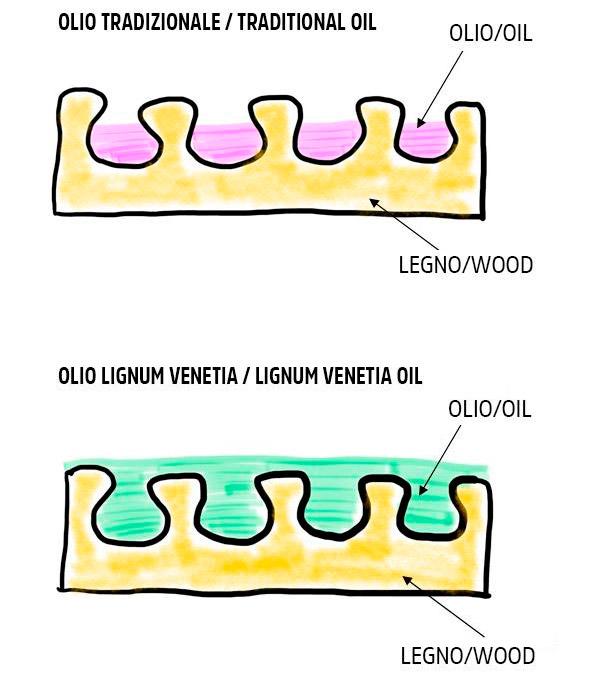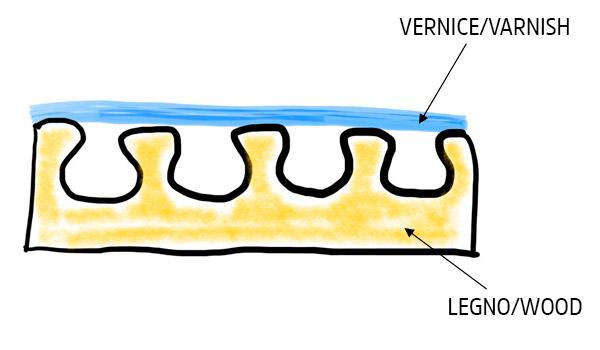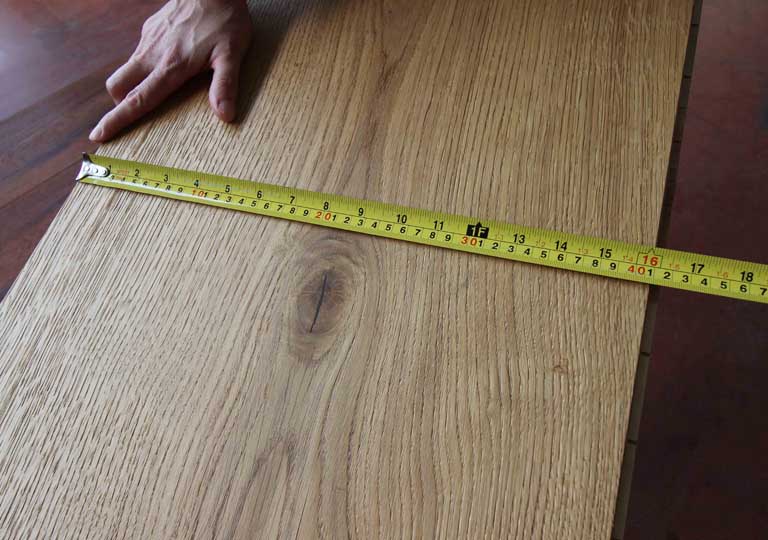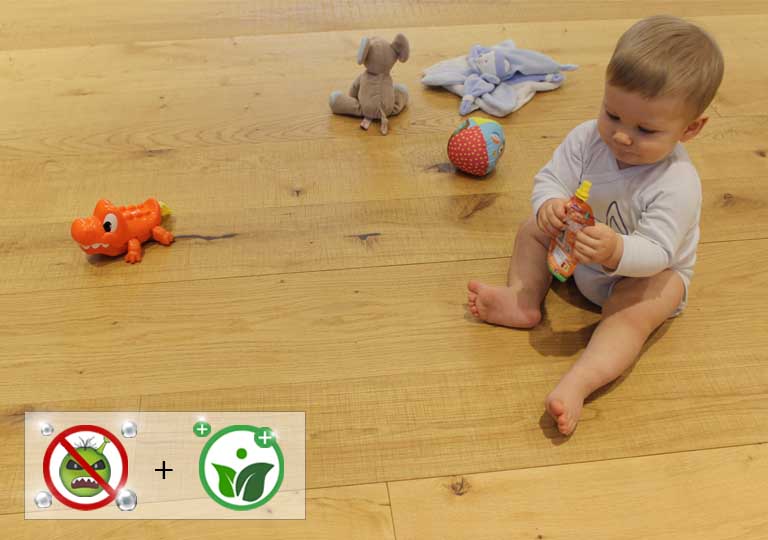Differences between an oiled and a varnished wooden floor

Wood, as we know, is a natural, soft and lively material, and for this reason it is important to protect it so that it remains beautiful over the years. In addition to this, through the oils or the varnishes it is also possible to play with the colors in order to obtain the most particular products and the desired shades. But what is the difference between an oiled parquet and a varnished one?

There are different types of oils for the finishes of wooden floors, from the most natural substances to oils that however also contain chemical substances inside them.
For us, the health of man and the environment is fundamental: for this reason we have chosen to work only with oils of mineral and vegetal origin, extremely natural, which, unlike paint, leave the pores of the wood open allowing it to continue to to breathe.
They are the same oils used for children's wooden toys, formaldehyde-free and without other toxic substances, so that it allows us to produce wooden floors which are suitable for even the most delicate skin.
Not only the oil quality is important: the quantity and the method of application is also very important. Our production process involves several applications on the table, even with manual spreading: in this way oil penetrates deeply protecting the wood not only from the outside but also from the inside, making it more resistant to stains and abrasions.
Compared to the varnish, whicht creates a surface film that seals the wood, the oil finish gives the wood a natural, soft to the touch.
The quality and especially the quantity of the oils we use protect the parquet surface for a long time, making it resistant to scratches, abrasions, water and stains.
In case of accidental scratches, the oil-treated floor allows easy intervention on the surface restoring the original finish of the parquet; Lignum Venetia always provides a small oil kit with each supply to be enable the customer to achieve some repair, in case it is needed. In case of deep scratches, it is advisable to contact a professional.
Many people (probably thinking about the very first oil finishes that has been released on the market) are still lead to think that an oiled wood floor is more delicate and requires more attention, compared to a varnished floor and that also the cleaning is more difficult, perhaps to be done with special machinery.
This is not the case: our oiled floors can be cleaned extremely quickly and easily. Simply clean the floor with a little quantity of neutral soap, diluted in lukewarm water and use it on the floor with a well-wrung damp cloth.

In this case the amount of varnish applied on the surface of the boards creates a layer that completely seals the pores of the wood: the wood can no longer breathe and the result is a parquet resistant to stains and aggressive agents, but with a plastic look, that seems almost fake.
Inside the varnish there are acrylic emulsions, chemical substances that are emitted in the air; on the basis of this last factor it is essential to check that the parquet treated with this system has a level of emission of volatile organic compound (VOC) which is lower than the the limit established by law.
Unlike oiled floors, in case of scratches, in the varnished floor it is always advisable to contact a professional who can intervene to solve the problem. In most cases, to restore a small defect on a varnished floor, we must wait for the entire surface to be sanded.
ADVANTAGEDS OF AN OILED FLOOR (PROS AND CONS OF AN OILED FLOOR)
ADVANTAGES
- Surface is smooth and natural at the touch;
- Wood breathes;
- Scratches on the surface are less visible and it is always possibel to touch up easily, using the touching up kit that we supply with every floor;
- E’ resistente all'acqua e alle macchie It is water-resistant and stain-resistant (coffee, red wine, coca-cola, lemon...)
- Easy and quick clearing;
- Oil does not contain harmful substances and is completely atoxic; the floor is therefore ideal for chiare;
- By using periodically a specific product - on your own - without using special machinery, the finish can be revived, thus obtaining a new parquet.
DISADVANTAGES
- It will be damaged by aggressive substances such as ammonia, alcohol, beach and similar products
- Do not use boiling water for the cleaning
PROS AND CONS OF A VARNISHED FLOOR
ADVANTAGES
- It is stain resistant, water-resistant (even to boiling water) and to chemical substances
- Easy to clean
DISADVANTAGES
- Varnish creates a “seal” in the surface and gives a rather plastic aspect;
- Wood can not breathe;
- It is not possible to repair the single scratch, it is necessary to make a complete intervention and sand the whole room surface;
- Varnish may contain harmful substances;
- It is not possible to refresh the surface: if the surface is damaged it has to be sanded completely by an expert parquet finisher.
In conclusion we can say that choosing the ideal finishing for your parquet, you must always consider the requiremets to deal with or simply your personal style and taste: always bear in mind that an oiled floor reveals all its naturalness without the presence of chemical substances.



